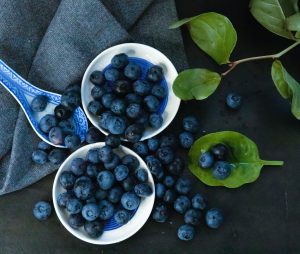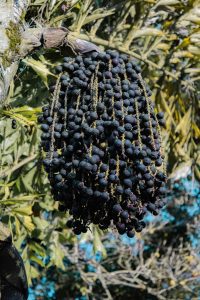
What Is a Melon?
A melon is a succulent and flavorful fruit belonging to the Cucurbitaceae family, which includes cucumbers, pumpkins, and squash. Characterized by its juicy and sweet flesh, melons come in various types, each with distinct flavors and appearances. Common varieties include watermelon, cantaloupe, honeydew, and others.
Melons are typically large, round or oval-shaped fruits with a thick rind or skin that encases the soft, edible interior. The vibrant colors of melon flesh range from red and orange to green and white, depending on the type. Known for their high water content, melons are refreshing and hydrating, making them especially popular during hot weather.
Often enjoyed fresh, sliced, or incorporated into salads and desserts, melons contribute essential vitamins, minerals, and antioxidants to a balanced diet, offering a delightful and nutritious addition to culinary experiences.
Why Do We Eat Melons?
We eat melons for various reasons, primarily driven by their delicious taste, hydrating properties, and numerous health benefits. Here are some key reasons why melons, including varieties like watermelon, cantaloupe, and honeydew, are popular in diets worldwide:
- Sweet and Refreshing Taste:
- Melons have a naturally sweet and refreshing flavor, making them a delightful treat, especially during warm weather.
- High Water Content:
- Melons, such as watermelon, have high water content (over 90%). This makes them an excellent choice for staying hydrated and quenching thirst.
- Nutrient-Rich:
- Melons are rich in essential vitamins and minerals, including vitamin C, vitamin A, potassium, and dietary fiber. These nutrients contribute to overall health and well-being.
- Low in Calories:
- Melons are generally low in calories, making them a guilt-free and nutritious snack option for those watching their calorie intake.
- Digestive Health:
- The dietary fiber in melons supports digestive health by promoting regular bowel movements and aiding in the prevention of constipation.
- Versatility:
- Melons can be enjoyed in various ways, such as sliced, diced, or blended into smoothies. They are also commonly used in fruit salads, desserts, and refreshing beverages.
- Hydration in Different Forms:
- Melons can be consumed in their natural state, juiced, or blended into smoothies, providing a versatile way to stay hydrated.
- Antioxidant Properties:
- Some melons, like cantaloupe, contain antioxidants that help protect the body’s cells from damage caused by free radicals.
- Cooling Effect:
- The natural juiciness and high water content of melons provide a cooling sensation, making them particularly enjoyable in hot weather.
- Desserts and Culinary Use:
- Melons are versatile ingredients in various culinary applications, from fruit salads to desserts and even savory dishes.
In summary, the consumption of melons is driven by their pleasant taste, hydrating nature, nutritional richness, and versatility. Whether eaten on their own, added to dishes, or used in beverages, melons offer a delicious and healthful addition to a balanced diet.
When Do We Eat Melons?
Melons, such as watermelon, cantaloupe, and honeydew, are enjoyed at various times and occasions, depending on personal preferences, cultural traditions, and culinary creativity. Here are some common times when people often eat melons:
- Summer Gatherings:
- Melons are popular during the summer months due to their refreshing nature. They are often featured at picnics, barbecues, and outdoor gatherings.
- Hot Weather:
- The high water content and cooling properties of melons make them a go-to choice for staying hydrated and refreshed, especially during hot weather.
- Desserts and Snacks:
- Melons are commonly enjoyed as standalone snacks or incorporated into desserts like fruit salads, sorbets, and gelatos.
- Breakfast:
- Sliced or diced melons, including cantaloupe or watermelon, can be a refreshing addition to breakfast, either on their own or added to yogurt and cereal.
- Smoothies and Juices:
- Melons are often blended into smoothies or juices, providing a sweet and hydrating element to these beverages.
- After Exercise:
- The natural sugars and hydration benefits of melons make them a popular choice for a post-exercise snack to replenish energy and fluids.
- Festivals and Celebrations:
- Melons may be featured in celebrations and festivals, either on their own or as part of fruit displays and arrangements.
- Dinner Parties:
- Melons can be included in appetizers, salads, or even as a palate-cleansing course in fine dining settings.
- Creative Culinary Use:
- Chefs and home cooks often experiment with melons in various culinary creations, from savory dishes to innovative desserts.
- Anytime as a Refreshing Snack:
- Melons can be enjoyed anytime as a quick and refreshing snack due to their natural sweetness and hydrating properties.
Ultimately, the timing of eating melons is flexible and can vary based on individual preferences and the culinary context. Their versatility allows them to be incorporated into a wide range of dishes and enjoyed in diverse ways throughout the day.
Ingredients of Melons
Melons, including varieties like watermelon, cantaloupe, and honeydew, have simple yet nutritious compositions. Here are the main components:
- Water:
- Melons have high water content, contributing to their juicy and hydrating nature.
- Natural Sugars:
- Melons contain natural sugars, primarily fructose, which gives them their sweet taste.
- Vitamins:
- Melons are a good source of essential vitamins, including vitamin C, which supports the immune system, and vitamin A, important for vision and skin health.
- Minerals:
- Melons provide minerals like potassium, which is crucial for maintaining proper fluid balance and supporting heart health.
- Dietary Fiber:
- While not as high in fiber as some other fruits, melons do contribute dietary fiber, supporting digestive health.
- Antioxidants:
- Certain melons, like cantaloupe, contain antioxidants such as beta-carotene, which may help protect cells from damage.
The specific nutrient content can vary among different types of melons. Additionally, some melons, such as watermelon, are available in seedless varieties for added convenience.
Melons are not only delicious but also offer a range of health benefits, making them a nutritious addition to a balanced diet.
Types of Melons
There are numerous types of melons, each with its own distinct flavor, texture, and appearance. Here are some common varieties of melons:
- Watermelon (Citrullus lanatus):
- Known for its vibrant red or pink flesh and black seeds (or seedless varieties), watermelon has a sweet and juicy flavor. Varieties include Sugar Baby, Crimson Sweet, and Yellow Doll.
- Cantaloupe (Cucumis melo var. reticulatus):
- Recognized by its netted rind and orange, sweet flesh, cantaloupe is a popular melon variety. Common cultivars include Hale’s Best, Ambrosia, and Sweet ‘n Early.
- Honeydew (Cucumis melo var. inodorus):
- Characterized by its smooth, pale green skin and sweet, pale green flesh, honeydew melon is often enjoyed fresh or in fruit salads. Popular types include Orange Flesh and Green Flesh honeydews.
- Galia Melon (Cucumis melo var. reticulatus ‘Galia’):
- This type of melon has a netted rind like cantaloupe but with a sweet, aromatic flavor. It has a greenish flesh when ripe.
- Charentais Melon (Cucumis melo var. cantalupensis ‘Charentais’):
- Originating from France, Charentais melons are small, round melons with a smooth, gray-green skin and aromatic orange flesh. They are prized for their sweetness and fragrance.
- Santa Claus Melon (Cucumis melo var. inodorus ‘Santa Claus’):
- Also known as Christmas Melon, this variety has a yellowish-green skin and sweet, white flesh. It is often available during the winter months.
- Canary Melon (Cucumis melo var. inodorus ‘Canary’):
- Recognized by its bright yellow skin and pale green to white flesh, the Canary Melon has a sweet and mild flavor.
- Sprite Melon (Cucumis melo var. reticulatus ‘Sprite’):
- A smaller melon with a netted rind, the Sprite Melon has a sweet flavor and is often marketed as a personal-sized melon.
- Ogen Melon (Cucumis melo var. reticulatus ‘Ogen’):
- Originating from Israel, the Ogen Melon has a netted rind and sweet, orange flesh.
- Casaba Melon (Cucumis melo var. inodorus ‘Casaba’):
- Recognized by its wrinkled rind and sweet, pale green to white flesh, the Casaba Melon has a mild flavor.
These are just a few examples of the many melon varieties available. The specific types may vary by region, and each offers a unique taste and texture for culinary enjoyment.
Signs of Ripe, Signs of Raw and Signs of Rotten Melons
Signs of Ripe Melons:
- Sweet Aroma:
- Ripe melons often have a sweet and fragrant aroma at the stem end. This is particularly true for varieties like cantaloupe.
- Hollow Sound:
- When thumped or tapped, a ripe melon produces a dull, hollow sound. This is an indicator of the fruit’s juiciness and ripeness.
- Uniform Color:
- Ripe melons typically have a consistent and vibrant color. For example, watermelons should have a deep green or dull matte appearance.
- Slight Yield to Pressure:
- Ripe melons yield slightly to gentle pressure at the blossom end. This can be more noticeable in soft-fleshed varieties like peaches and nectarines.
- Netting or Webbing:
- Certain melons, like cantaloupe, exhibit a netted or webbed appearance on their skin when they are ripe.
Signs of Raw or Unripe Melons:
- Lack of Aroma:
- Unripe melons often lack a distinct, sweet aroma at the stem end. This is especially noticeable in varieties like cantaloupe.
- Green Color:
- Unripe melons tend to have a green or underdeveloped color, which may be a sign that they are not yet ready to eat.
- Heavy for Size:
- Unripe melons may feel heavy for their size, indicating a higher water content and underdeveloped sweetness.
- Firmness:
- Unripe melons are generally firmer to the touch. Varieties like watermelon and cantaloupe should have a slight give when ripe.
Signs of Rotten Melons:
- Foul Odor:
- Rotten melons emit a foul or fermented smell, indicating decay. This odor is noticeable at the stem end or when the melon is cut open.
- Soft or Mushy Texture:
- Rotten melons have a soft and mushy texture. Pressing on the skin may result in a noticeable indentation.
- Visible Mold:
- Mold on the surface or within the flesh is a clear sign of spoilage and rot.
- Discoloration:
- Dark or off-color patches on the rind or flesh can indicate rotting or deterioration.
- Leaking Liquid:
- Any liquid oozing from the melon is a sign of internal breakdown and spoilage.
These signs help consumers choose melons at their peak ripeness for the best flavor and quality.
Summary
In summary, selecting and enjoying melons involves recognizing specific signs of ripeness, rawness, and potential spoilage.
Ripe melons are characterized by a sweet aroma, a hollow sound when thumped, uniform color, slight yield to pressure, and, in some varieties, netting or webbing on the skin. Unripe melons lack a distinct aroma, have a green color, feel heavier for their size, and are generally firmer. Rotten melons exhibit a foul odor, soft or mushy texture, visible mold, discoloration, and may leak liquid.
Understanding these signs ensures that melons are chosen and consumed at their optimal ripeness, providing a delicious and satisfying culinary experience.






